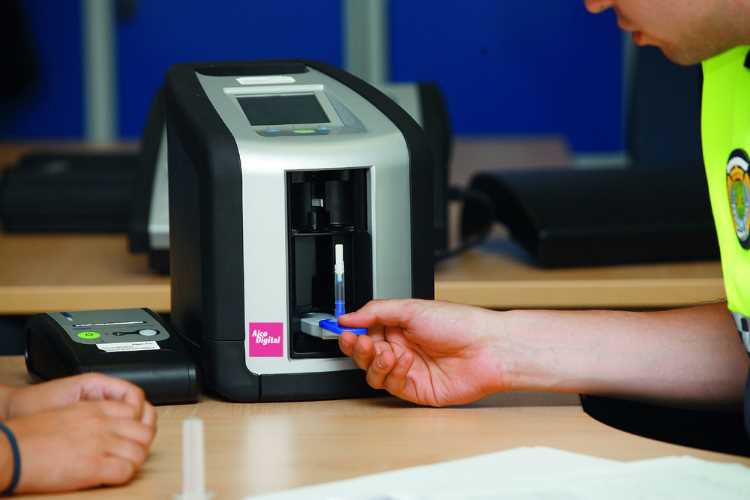Workplace drug testing methods
Testing for drug use on construction sites and in the workplace is intended to protect people and premises while ensuring that an employer’s responsibilities under the Health and Safety at Work Act have been met. There are several different testing methods, each with their own benefits.
When selecting a testing programme, employers can evaluate the answers to several questions, including:
- Is saliva testing a viable option? In environments where safety and timing are priorities, saliva testing may be preferred, since it can determine if someone is currently under the influence of drugs. Saliva testing can produce a positive result if the individual had taken drugs in the last two hours. Saliva testing is generally not prone to contamination.
- Is urine testing a viable option? While saliva testing may be suitable for some sensitive environments, urine testing may be suitable in instances where random testing policies are in place. This method can provide instant, in-house results that may be able to prevent accidents from happening on site in the first place. However, urine testing may not provide reliable results in instances where very recent substance activity has occurred - or if the test participant is under the influence at the time the sample was taken. Generally, urine tests are unable to detect drugs that have been taken in the 48 hour time period immediately prior to the test.
- What is the test’s cut-off level for each drug? This factor establishes how much of a drug can be present in a person’s system before its presence is detected by the test. If this level is low, the kit will be more sensitive to a positive result.
[edit] Related articles on Designing Buildings
Featured articles and news
The UK's Modern Industrial Strategy: A 10 year plan
Previous consultation criticism, current key elements and general support with some persisting reservations.
Building Safety Regulator reforms
New roles, new staff and a new fast track service pave the way for a single construction regulator.
Architectural Technologist CPDs and Communications
CIAT CPD… and how you can do it!
Cooling centres and cool spaces
Managing extreme heat in cities by directing the public to places for heat stress relief and water sources.
Winter gardens: A brief history and warm variations
Extending the season with glass in different forms and terms.
Restoring Great Yarmouth's Winter Gardens
Transforming one of the least sustainable constructions imaginable.
Construction Skills Mission Board launch sector drive
Newly formed government and industry collaboration set strategy for recruiting an additional 100,000 construction workers a year.
New Architects Code comes into effect in September 2025
ARB Architects Code of Conduct and Practice available with ongoing consultation regarding guidance.
Welsh Skills Body (Medr) launches ambitious plan
The new skills body brings together funding and regulation of tertiary education and research for the devolved nation.
Paul Gandy FCIOB announced as next CIOB President
Former Tilbury Douglas CEO takes helm.
UK Infrastructure: A 10 Year Strategy. In brief with reactions
With the National Infrastructure and Service Transformation Authority (NISTA).
Ebenezer Howard: inventor of the garden city. Book review.
The Grenfell Tower fire, eight years on
A time to pause and reflect as Dubai tower block fire reported just before anniversary.
Airtightness Topic Guide BSRIA TG 27/2025
Explaining the basics of airtightness, what it is, why it's important, when it's required and how it's carried out.
Construction contract awards hit lowest point of 2025
Plummeting for second consecutive month, intensifying concerns for housing and infrastructure goals.
Understanding Mental Health in the Built Environment 2025
Examining the state of mental health in construction, shedding light on levels of stress, anxiety and depression.






















